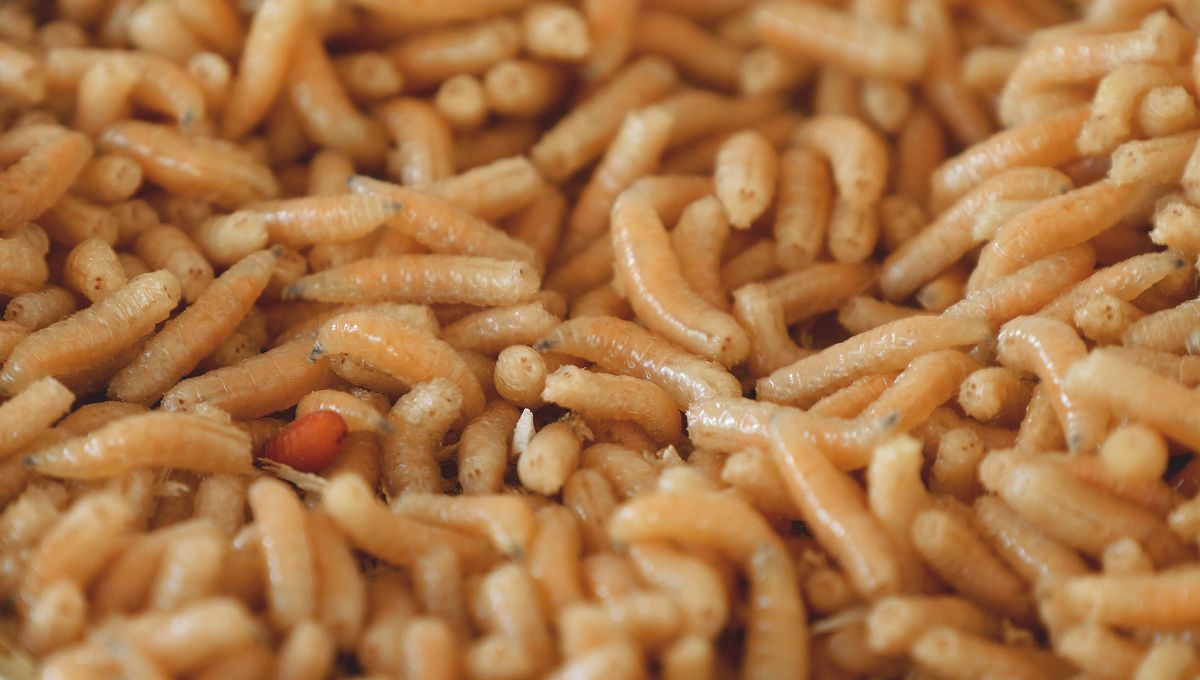
Neanderthals possibly had a secret ingredient in their kitchen that provided them with the fatty protein they needed to survive. Rather than feeding on lean game meat, our prehistoric sister lineage may have deliberately stored their kills until the rotting carcasses became infested with maggots, which they then gorged themselves on.
This predilection for grubs would explain why Neanderthal remains tend to exhibit such high stable nitrogen isotope ratios. Typically, it is the hypercarnivores – like lions or wolves – that sit at the top of the food web when it comes to nitrogen levels accumulated from prey consumption, yet researchers have continually found that Neanderthals were on par with these meat-loving predators.
“Neanderthals are actually higher than the carnivores, so they’re not sitting at the trophic position that you would think that they would sit at,” said Dr Melanie Beasley from Purdue University. “The explanation for why they are higher than the carnivores has been hypercarnivory, but we’re primates, so we can’t consume the levels of protein that a lion or a hyena or a wolf could consume because we’re not evolutionarily designed to be just a flesh-eater,” she told IFLScience.
Indeed, humans can’t consume more than around 300 grams of lean protein per day without becoming seriously ill. Doing so for more than a week or two can lead to protein poisoning or “rabbit starvation”, which can only be avoided by supplementing our diet with fat and carbohydrates.
In a new study, Beasley and her colleagues sought to determine the source of the nitrogen in Neanderthals’ diet, using ethnographic descriptions of modern and historic hunter-gatherer groups for inspiration. For instance, they found that when northern-latitude groups like the Inuit made a kill, they gave most of the lean muscle meat to their dogs while only consuming the fatty parts like the brain, tongue, and organs.
On top of this, the study authors note that “the ethnohistoric record contains countless examples of Indigenous peoples routinely consuming putrefied animal foods with maggots.” They therefore wondered whether this may have provided the secret source of both fat and nitrogen that made up the bulk of the Neanderthal diet.
“Lean game meat is an incomplete protein – it’s not like the domesticated cattle we eat today, which is this fatty, fleshy meat,” said Beasley. “But maggots convert that lean game meat by eating it so that they themselves become fatty, so by eating the fatty maggots with that lean game meat, you’re getting a more complete nutrient of that fat with that meat.”
To test their hypothesis, the researchers conducted stable nitrogen isotope ratio analyses on 389 larvae from three fly families, which they gathered from rotting flesh. Results showed that while the putrefaction process caused nitrogen levels within the meat to rise slightly, the maggots themselves showed far higher nitrogen values than the flesh, with up to 43.2 percent detected in some of the grubs.
The study authors therefore suggest that, just like northern-lattitude hunter-gatherers, Neanderthals probably discarded most of the muscle meat of their prey, focussing only on the fatty components. “But we are going an important step further here by suggesting that Late Pleistocene hominins often ate these fat-rich tissues in a tainted or putrefied state together with their almost inevitable infestation of living and dead maggots,” they write.
“It is the maggots, more so than the carcass tissues themselves, that gave Late Pleistocene hominins both a rich source of fat and a very highly [nitrogen]-enriched source of protein.”
Aside from solving the mystery of Neanderthals’ unexpectedly high nitrogen values, this finding also sheds new light on the extinct hominin’s food storage habits and ability to plan ahead. “If you think of a Neanderthal group hunting a big mammoth, that carcass is going to be lying on the landscape rotting, which is going to attract flies to it,” said Beasley.
“So they probably thought, ‘all right, cool, let’s come back in about a week’s time and scoop up all of those maggot masses and have a tasty treat’. It’s an easily collectible food resource,” she said.
The study is published in the journal Science Advances.
Source Link: Neanderthals May Have Feasted On Maggots, Which They Harvested From Rotting Flesh